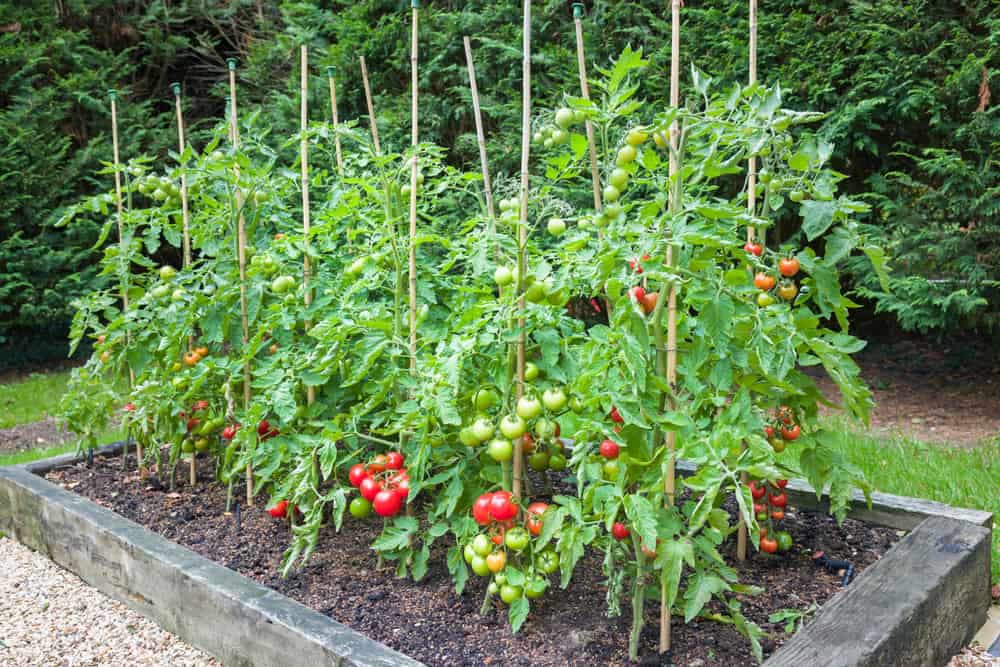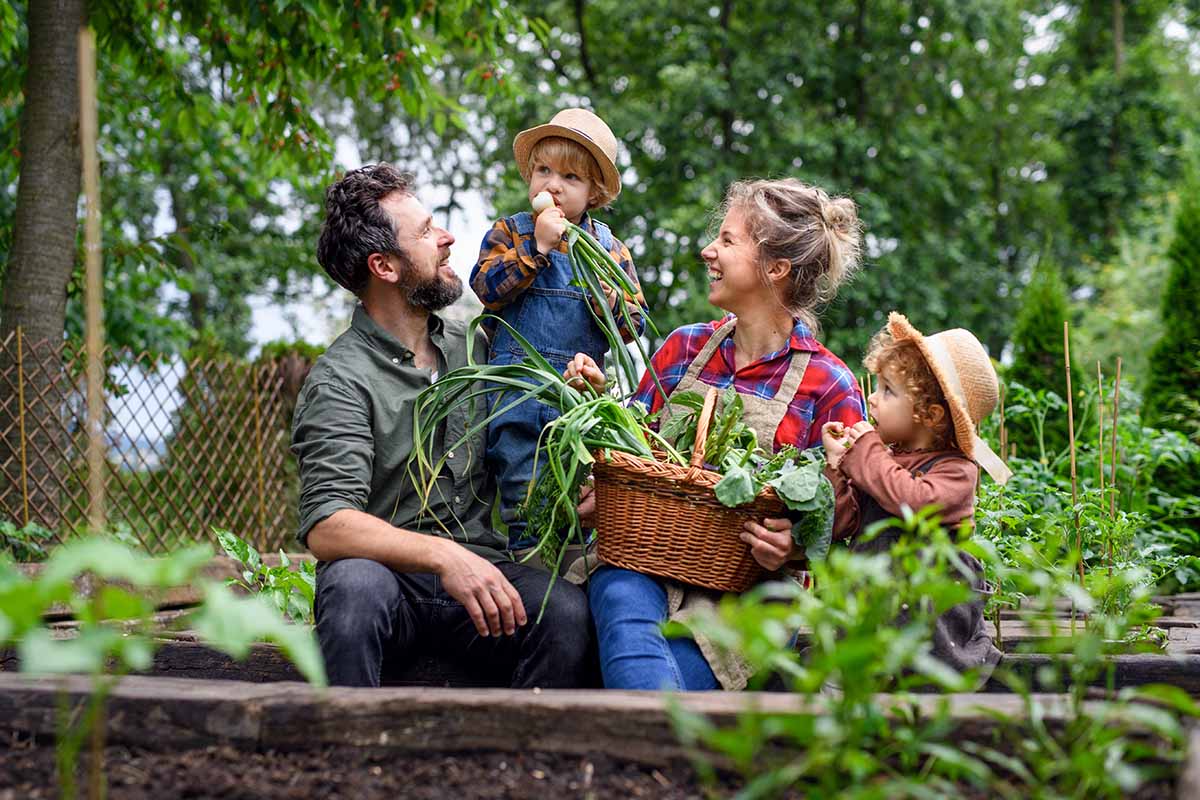The Ultimate Guide To Raised Bed Vegetable Gardening For Beginners
The Ultimate Guide to Raised Bed Vegetable Gardening for Beginners
Introduction
If you're looking for a way to grow your own vegetables, raised bed gardening is a great option. Raised beds are easy to build and maintain, and they offer a number of advantages over traditional gardening methods.
In this guide, we'll walk you through the basics of raised bed vegetable gardening, from choosing the right location to planting and harvesting your crops. We'll also provide tips on how to improve your soil, manage pests and diseases, and keep your garden looking its best.
So whether you're a gardening novice or a seasoned pro, read on for everything you need to know about raised bed vegetable gardening!
Why Choose Raised Bed Gardening?
There are many reasons why you might choose to garden in raised beds. Here are just a few:
- Raised beds are easier to weed and maintain. The raised sides of a bed make it difficult for weeds to germinate, and the soil is easier to dig and work in.
- Raised beds warm up faster in the spring. This means you can start planting earlier in the season and harvest your crops sooner.
- Raised beds can improve drainage. If you have poor drainage in your yard, raised beds can help to improve the flow of water.
- Raised beds can be more productive. Because the soil in a raised bed is typically loose and well-drained, plants can grow more roots and produce more fruit.
Choosing the Right Location for Your Raised Bed
The first step in starting a raised bed garden is to choose the right location. Your bed should be in a spot that gets at least 6 hours of sunlight per day. It should also be in an area that is well-drained.
If you have a lot of space, you can build a single large raised bed. However, if you have limited space, you can build several smaller beds. You can also build raised beds in containers, such as old tires or wooden boxes.
Building Your Raised Bed
Once you've chosen a location, you'll need to build your raised bed. There are many different ways to build a raised bed, but the most common method is to use wood. You can use pressure-treated lumber, cedar, or even old pallets.
The size of your raised bed will depend on the amount of space you have and the number of plants you want to grow. However, most raised beds are 4-6 feet wide and 2-4 feet deep.
Once you've built your raised bed, you'll need to fill it with soil. You can use a mixture of topsoil, compost, and sand. The exact ratio of these ingredients will depend on your soil type.
Planting Your Raised Bed
Once your raised bed is filled with soil, you're ready to start planting. When choosing plants for your raised bed, it's important to consider the amount of sunlight your bed gets. You'll also want to choose plants that are compatible with each other. For example, you wouldn't want to plant tomatoes and peppers in the same bed, as they have different water and nutrient requirements.
Caring for Your Raised Bed Garden
Once your plants are in the ground, you'll need to care for your raised bed garden. This includes watering, weeding, and fertilizing.
Water your raised bed garden regularly, especially during the hot summer months. You'll also need to weed your bed regularly to prevent weeds from competing with your plants for water and nutrients.
Fertilize your raised bed garden every few months with a balanced fertilizer. You can also add compost to your bed to improve the soil quality.
Harvesting Your Crops
Once your plants start to produce fruit, you can start harvesting your crops. Be sure to harvest your crops when they are ripe for the best flavor.
Conclusion
Raised bed gardening is a great way to grow your own vegetables. It's easy to do, even if you don't have a lot of experience gardening. And with a little care and attention, you can enjoy fresh, homegrown vegetables all season long.
Are you a beginner gardener who is interested in starting a raised bed vegetable garden? If so, you've come to the right place! Raised bed vegetable gardening is a great way for beginners to get started gardening, as it can help to improve drainage, reduce weeds, and extend the growing season.
There are a few things you'll need to do to get started with raised bed vegetable gardening. First, you'll need to choose a location for your beds. The ideal location will be in full sun and have well-drained soil. Once you've chosen a location, you'll need to build your beds. There are many different ways to build raised beds, so you can choose a method that works for you.
Once your beds are built, you'll need to fill them with soil. You can use a variety of different types of soil, but it's important to choose a soil that is high in organic matter. Once your beds are filled with soil, you're ready to start planting!
If you're a beginner gardener, I recommend visiting Garden Wiki for more information about raised bed vegetable gardening. This website has a wealth of information on everything from choosing a location to planting your veggies.
FAQ of raised bed vegetable gardening for beginners
Frequently Asked Questions About Raised Bed Vegetable Gardening for Beginners
1. What are the benefits of raised bed vegetable gardening?
There are many benefits to raised bed vegetable gardening, including:
- Easier access for people with limited mobility
- Reduced risk of soil-borne diseases
- Improved drainage and aeration
- Increased yields
- Less weeding
- More control over the soil composition
2. What are the best vegetables to grow in a raised bed?
Any vegetable can be grown in a raised bed, but some vegetables are more suited to this type of gardening than others. Some good choices for raised beds include:
- Tomatoes
- Peppers
- Cucumbers
- Squash
- Beans
- Lettuce
- Spinach
- Carrots
- Potatoes
3. How do I build a raised bed?
There are many different ways to build a raised bed, but here is a basic overview:
- Choose a location that gets full sun.
- Level the ground.
- Build a frame out of wood, metal, or concrete blocks.
- Fill the bed with good-quality soil and compost.
- Water the bed well.
4. When should I plant in a raised bed?
The best time to plant in a raised bed depends on your climate. In general, you should plant after the last frost date in your area.
5. How do I care for a raised bed vegetable garden?
The most important things to do to care for a raised bed vegetable garden are:
- Water regularly.
- Mulch to suppress weeds and retain moisture.
- Fertilize as needed.
- Protect your plants from pests and diseases.
Image of raised bed vegetable gardening for beginners
5 different images of "raised bed vegetable gardening for beginners" from Pinterest:
- Image 1: A raised bed garden with a variety of vegetables, including tomatoes, peppers, cucumbers, and lettuce.

- Image 2: A close-up of a raised bed garden with young tomato plants.

- Image 3: A diagram of a raised bed garden, showing the different layers of soil and compost.
- Image 4: A photo of a person planting vegetables in a raised bed garden.

- Image 5: A photo of a family harvesting vegetables from their raised bed garden.

Post a Comment for "The Ultimate Guide To Raised Bed Vegetable Gardening For Beginners"